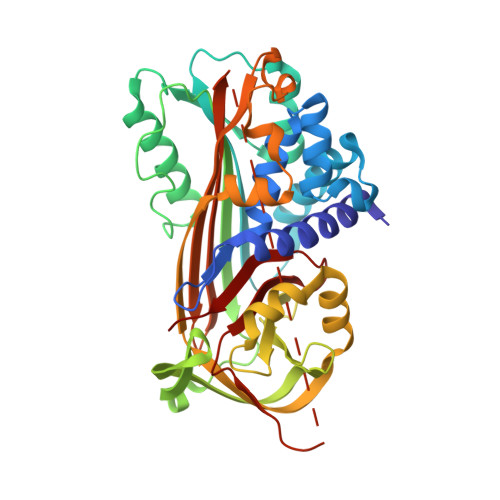A tick salivary protein targets cathepsin G and chymase and inhibits host inflammation and platelet aggregation.
Chmelar, J., Oliveira, C.J., Rezacova, P., Francischetti, I.M., Kovarova, Z., Pejler, G., Kopacek, P., Ribeiro, J.M., Mares, M., Kopecky, J., Kotsyfakis, M.(2011) Blood 117: 736-744
- PubMed: 20940421
- DOI: https://doi.org/10.1182/blood-2010-06-293241
- Primary Citation of Related Structures:
3NDA - PubMed Abstract:
Platelet aggregation and acute inflammation are key processes in vertebrate defense to a skin injury. Recent studies uncovered the mediation of 2 serine proteases, cathepsin G and chymase, in both mechanisms. Working with a mouse model of acute inflammation, we revealed that an exogenous salivary protein of Ixodes ricinus, the vector of Lyme disease pathogens in Europe, extensively inhibits edema formation and influx of neutrophils in the inflamed tissue. We named this tick salivary gland secreted effector as I ricinus serpin-2 (IRS-2), and we show that it primarily inhibits cathepsin G and chymase, while in higher molar excess, it affects thrombin activity as well. The inhibitory specificity was explained using the crystal structure, determined at a resolution of 1.8 Å. Moreover, we disclosed the ability of IRS-2 to inhibit cathepsin G-induced and thrombin-induced platelet aggregation. For the first time, an ectoparasite protein is shown to exhibit such pharmacological effects and target specificity. The stringent specificity and biological activities of IRS-2 combined with the knowledge of its structure can be the basis for the development of future pharmaceutical applications.
Organizational Affiliation:
Institute of Parasitology, Biology Centre of the Academy of Sciences of Czech Republic, Ceske Budejovice, Czech Republic.















